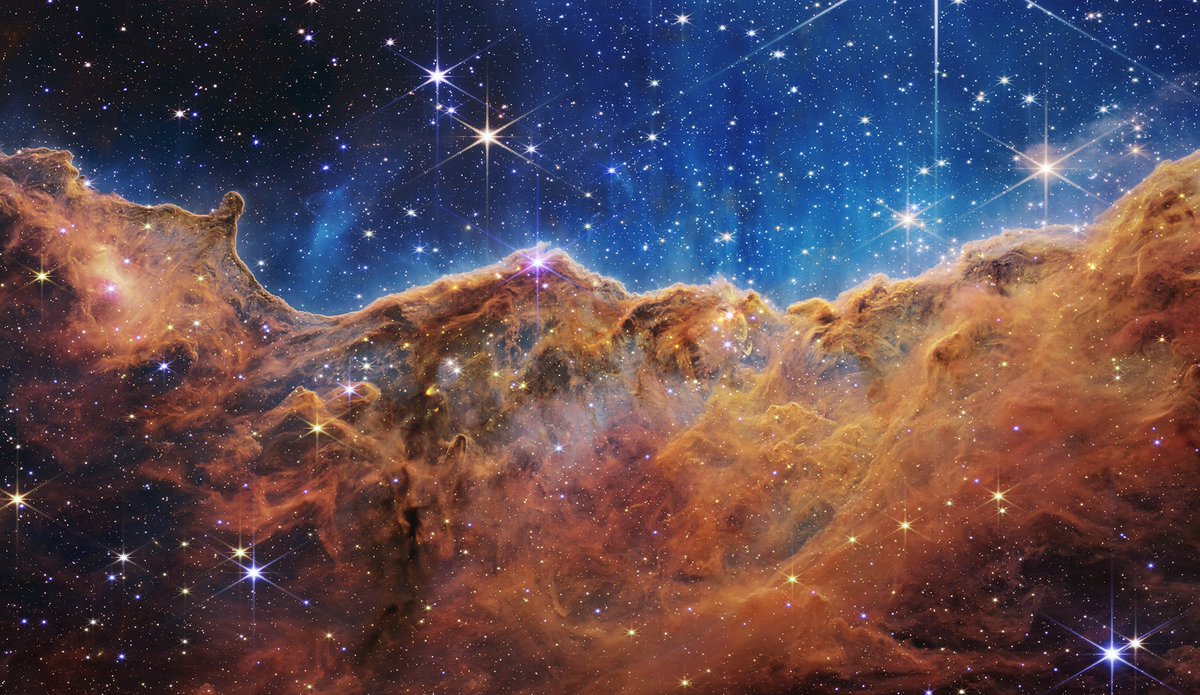
🌟 A star is born!
Behind the curtain of dust and gas in these “Cosmic Cliffs” are previously hidden baby stars, now uncovered by Webb. We know — this is a show-stopper. Just take a second to admire the Carina Nebula in all its glory: nasa.gov/webbfirstimage… #UnfoldTheUniverse
Behind the curtain of dust and gas in these “Cosmic Cliffs” are previously hidden baby stars, now uncovered by Webb. We know — this is a show-stopper. Just take a second to admire the Carina Nebula in all its glory: nasa.gov/webbfirstimage… #UnfoldTheUniverse

The “Cosmic Cliffs” build on the legacy of Hubble’s imagery of the Carina Nebula, seen here. Webb’s new view gives us a rare peek into stars in their earliest, rapid stages of formation. For an individual star, this period only lasts about 50,000 to 100,000 years. 

Two cameras are better than one, as seen in this combined view from Webb’s NIRCam & MIRI! In the near-infrared, we see hundreds of stars and background galaxies. Meanwhile, the mid-infrared shows us dusty planet-forming disks (in red and pink) around young stars. 

• • •
Missing some Tweet in this thread? You can try to
force a refresh











